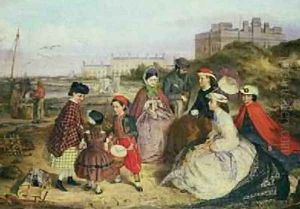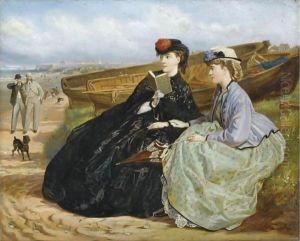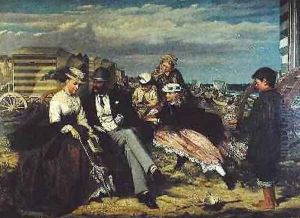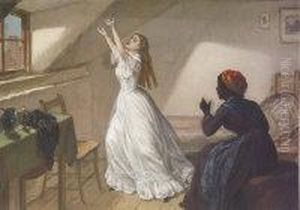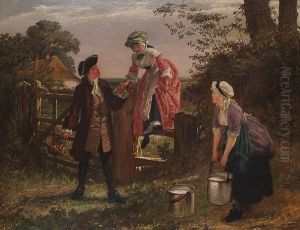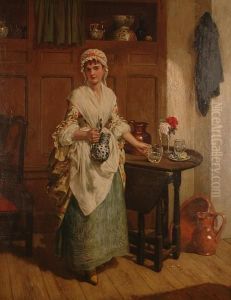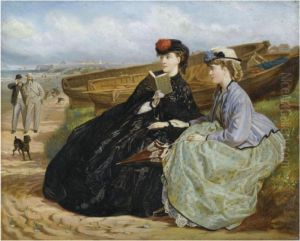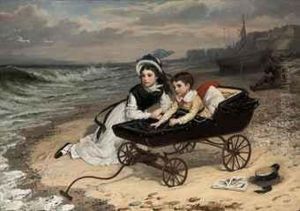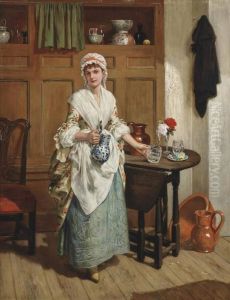Charles Wynee Nicholls Paintings
Charles Wynne Nicholls was an Irish painter, born in 1831 in Bath, England, but closely associated with Ireland throughout his career. His artistic journey began at the Dublin Society's School, where he honed his skills and developed a keen interest in the genre of historical and genre painting. Nicholls’ work is characterized by its attention to detail, vibrant color palette, and ability to convey deep emotional narratives within historical contexts.
Nicholls’ talent was recognized early in his career, leading to exhibitions at prestigious venues such as the Royal Academy and the British Institution in London. His paintings often depicted scenes from Irish history, literature, and everyday life, capturing the spirit and challenges of his time. One of his most notable works, 'The Saxon Plunder,' exhibited in 1861, is a testament to his skill in portraying dramatic historical moments with emotional depth and technical precision.
Throughout his career, Nicholls remained actively involved in the Irish art scene, contributing to the development of a distinct Irish identity in art. He was also a member of the Royal Hibernian Academy, further cementing his status as a significant figure in Irish art history.
Nicholls lived through a period of great change in Ireland, and his works provide valuable insights into the socio-political climate of his time. His ability to blend historical accuracy with artistic expression made him a beloved figure among his contemporaries and continues to endear him to art historians and enthusiasts today.
Charles Wynne Nicholls passed away in 1903, leaving behind a legacy of art that continues to be celebrated for its contribution to the Irish cultural heritage. His paintings are preserved in several public collections, including the National Gallery of Ireland, where they stand as a testament to his artistic achievements and the rich tapestry of Irish history.
